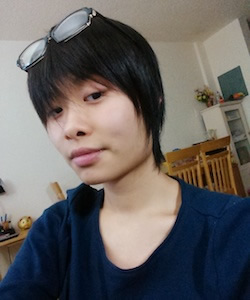In China during the middle of August, bakeries and supermarkets start to offer an array of delicious mooncakes (flavors range from red bean to lotus seed paste!). Popular mooncake flavors sell out nearly a month before the full moon appears in the August sky. Yet the availability of these treats in stores signifies that Mid-Autumn Festival, a popular harvest festival, is just around the corner. Although traditions surrounding this holiday vary across the country, virtually everyone observes the Mid-Autumn Festival.
Mid-Autumn Festival originates from an emperor who ruled during the Shang dynasty. He enjoyed observing the full moon in autumn, and soon enough during the Zhou Dynasty, kings began to pray to the moon using incense. They also worshipped the gods through food offerings. Eventually the nobles and upper-class officers who celebrated alongside the kings passed these traditions down to lower-class citizens. Today, many Chinese men and women observe this holiday in different ways.
Around the Guangdong province, people tend to preserve old traditions. Specific holiday customs include burning incense and preparing mooncakes and chicken, which are offered to the gods. Once the incense burns out, people enjoy the mooncakes and chicken with their families. Known for their more traditional beliefs, Guangdong citizens show respect to the gods during the Mid-Autumn Festival through prayer, with the intention that their meals will be blessed by the gods. Families often head out to bakeries where they purchase specific mooncakes—the kind that contain double egg yolks. This particular mooncake symbolizes good luck. However, younger generations prefer eating snow skin mooncakes and ice cream mooncakes.
In the south of China, many people still believe that the Mid-Autumn Festival should be dedicated to worshiping the lunar goddess, Chang’e. Chang’e is known for drinking the elixir of immortality in excess. The potion was so powerful that after drinking it, Chang’e ascended all the way to the moon. Consequently, many southern Chinese honor the moon goddess and pray to her for prosperity during the holiday.
In the northern part of China, some families make mooncakes from scratch, using flavors that are not normally offered in the market, such as melon, pumpkin, taro, and black sesame. Only a few families, most of them from more traditional backgrounds, pray to the gods. The vast majority of the northern Chinese population celebrates the Mid-Autumn Festival in a more contemporary style; they go to celebrations with dragon dances and drum beating, invite friends over for drinks, and decorate their homes with lanterns. People buy gifts, such as clothing and food, for their families. In some parts of the country, such as Xixiang County in Shaanxi Province, eating watermelon is customary, while in other areas, such as Luochuan County, parents make food for their children to bring to school, where they have a holiday party with other students and teachers.
Regardless of where they are from, almost everyone ends the day by sitting outside and viewing the moon with their loved ones, all while snacking on delicious mooncakes.

